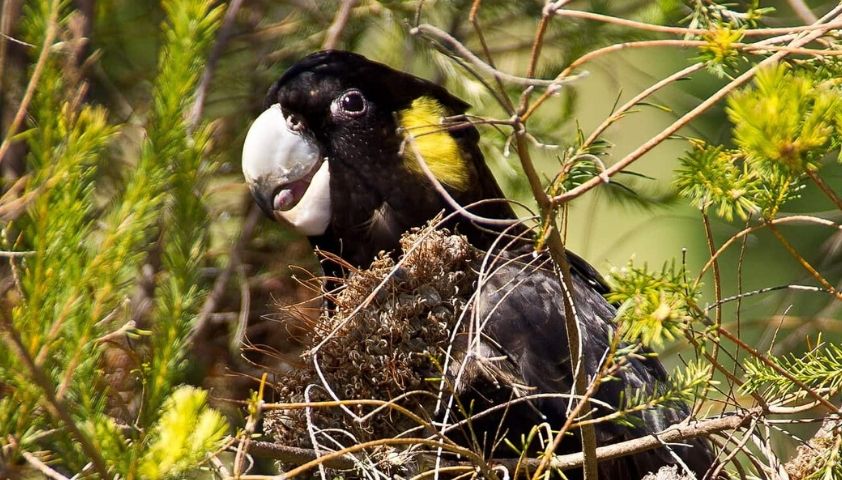Rare Black Glossy Cockatoos Survive on Kangaroo Island

Despite the recent bushfires on Kangaroo Island, nature prevails! We have a great reason to cheer about the latest news that the beautiful and Endangered Black Glossy Cockatoo has survived the Kangaroo Island bushfires, thanks to artificial nesting boxes that have survived the bushfires. This is wonderful news for Kangaroo Island, South Australia and the world, and it is expected that more endangered glossy-black cockatoos on Kangaroo Island, will be discovered.
For those of you who don’t know much about the species, Glossy Black-Cockatoos mostly occur in eastern Australia, from south-eastern Queensland to eastern Victoria, and there is also an outlying population much further west, on Kangaroo Island in South Australia. Up to 75% of this species’ population lived within 200,000 hectares of land that was impacted by bushfires on the Island, but incredibly, despite the fires, there are healthy pockets of sheoak trees that have survived the flames and they’re providing desperately-needed food for these birds. Approximately 370 glossy black cockatoos were thought to have lived on the island prior to December 2019, and the species is now proving to be a resilient one.
One of the colloquial names for the species is the Casuarina Cockatoo, which arises from the birds’ preferred food: the seeds of the casuarina tree. They strip the seed pods from the tree, then tear them open with their strong bills to extract the seeds — the ground below is often littered with dozens of discarded cones.
The birds were discovered in artificial boxes in Lathami Conservation Park, on the island’s north coast. The burnt area was home to 93 of 130 artificial nesting boxes, but the extent of the habitat damage is currently being assessed.
Many cockatoo pairs rely entirely on artificial nesting boxes to breed on Kangaroo Island, so it’s crucial for the damage to be assessed and new nests installed where there’s feeding habitat. There have also been glossy black cockatoos that have escaped the fire to Cygnet Park, where several pairs were recently observed feeding and mating. In fact, a group of up to 14 birds were seen in one tree at the park – and the most exciting part is that some of them were initiating the early stages of breeding, which is amazing given what Kangaroo Island and this species have endured over the past few months.
Such great news for Kangaroo Island and South Australia!

